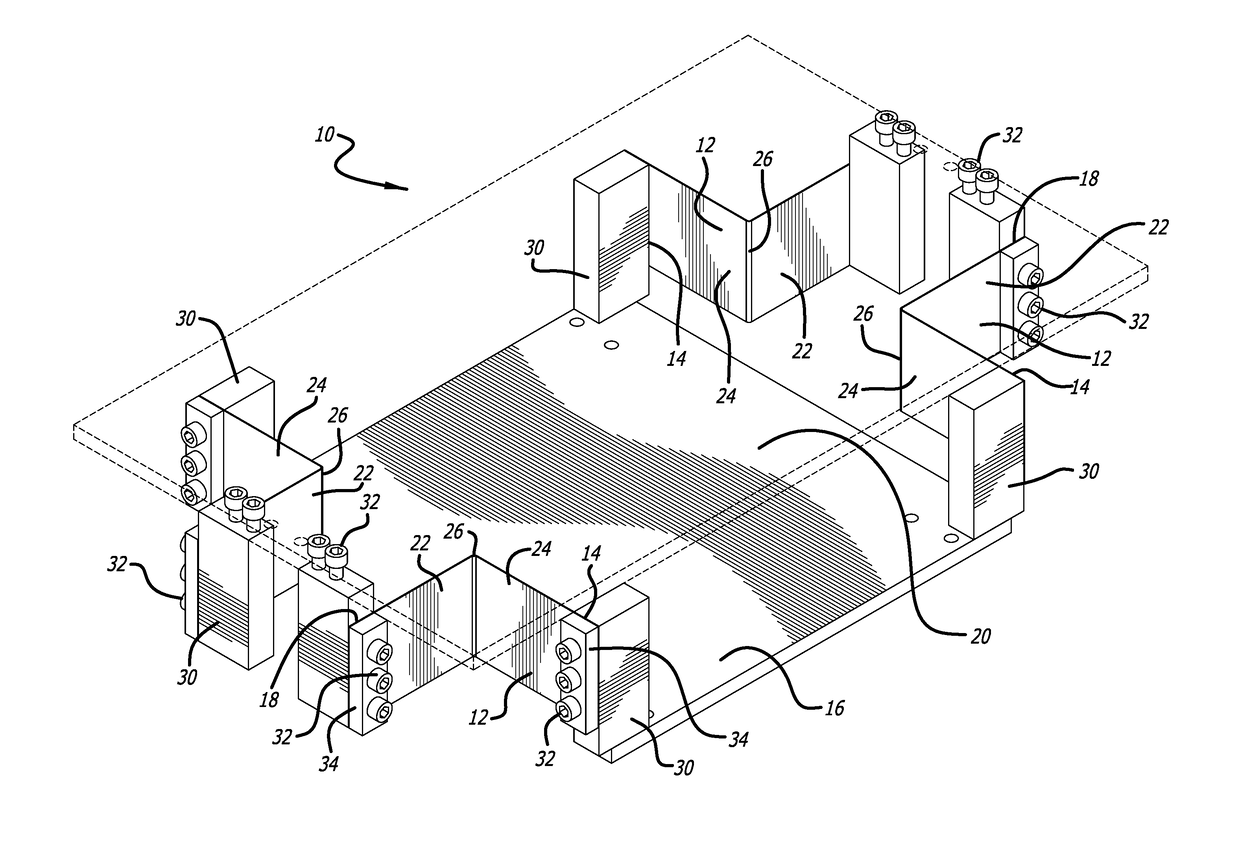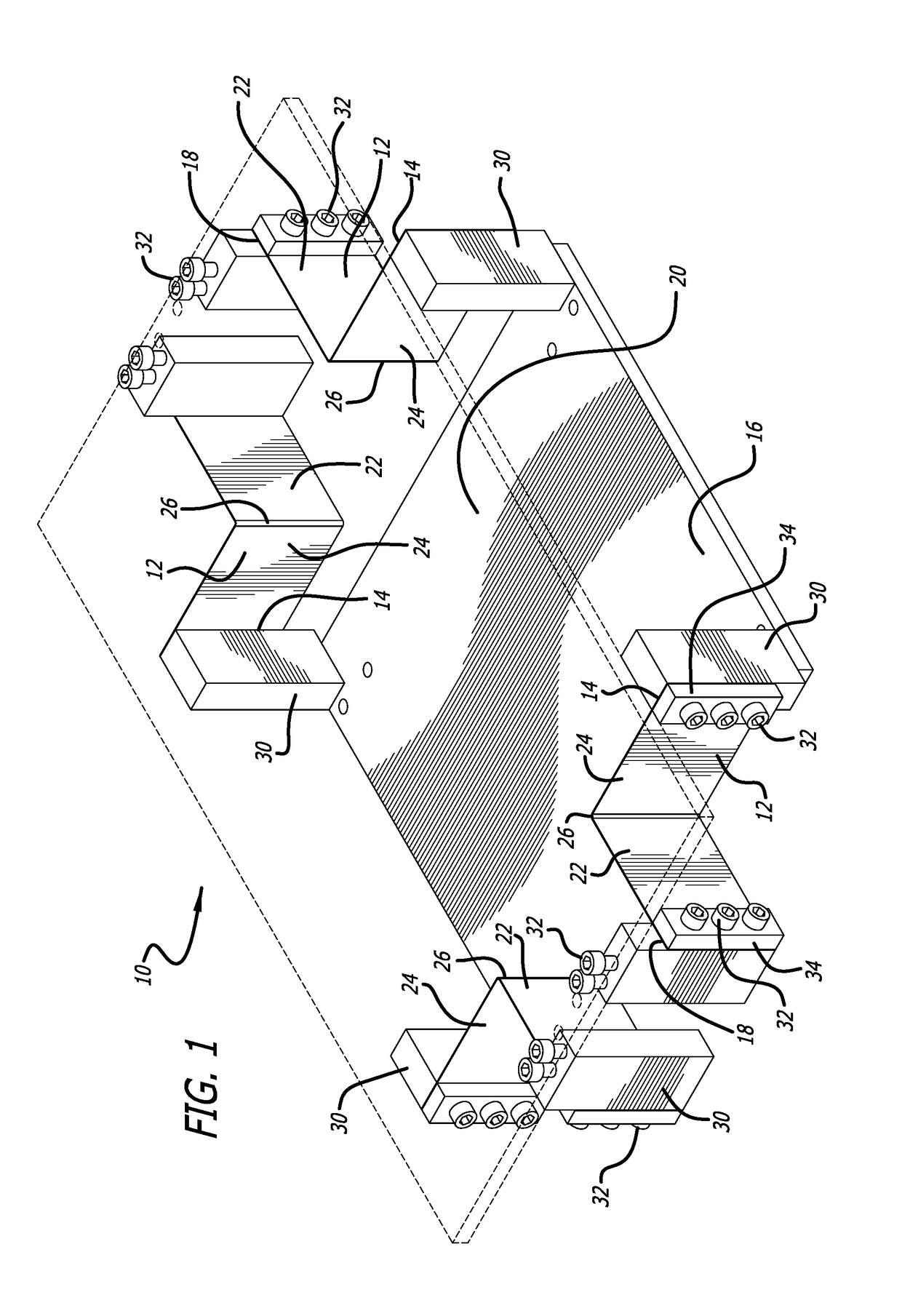Horizontal-motion vibration isolator
a horizontal motion and vibration isolator technology, applied in the direction of vibration suppression adjustment, mechanical apparatus, machine supports, etc., can solve the problems of difficult to get a stable spring that also has low lateral stiffness, mechanical path must be sufficiently long to achieve a low frequency, and can be very short, so as to reduce the complexity of the necessary components, and reduce the effect of vertical heigh
- Summary
- Abstract
- Description
- Claims
- Application Information
AI Technical Summary
Benefits of technology
Problems solved by technology
Method used
Image
Examples
Embodiment Construction
[0042]FIGS. 1-5 show one embodiment of a compact horizontal-motion isolator 10 made in accordance with the present invention. The embodiment of the horizontal-motion isolator 10 of FIGS. 1-5 is designed to support a payload (not shown) relative to a foundation (base) to reduce the transmission of horizontal vibrations (motion) between the payload and foundation.
[0043]The compact horizontal-motion isolator 10 of the present invention includes four support members in the form of bent flexures 12 that cooperatively support the object to be isolated from horizontal vibrations. Each of the bent flexures 12 have a first fixed or stationary end 14 coupled to a base platform 16 and a free or floating end 18 coupled to a top mounting plate 20 (shown in dashed lines in FIG. 1) that can be used in this particular embodiment for supporting the object to be isolated. The base platform 16 can sit on a foundation and may include leveling screws (not shown) used for leveling the base platform 16 re...
PUM
 Login to View More
Login to View More Abstract
Description
Claims
Application Information
 Login to View More
Login to View More - R&D
- Intellectual Property
- Life Sciences
- Materials
- Tech Scout
- Unparalleled Data Quality
- Higher Quality Content
- 60% Fewer Hallucinations
Browse by: Latest US Patents, China's latest patents, Technical Efficacy Thesaurus, Application Domain, Technology Topic, Popular Technical Reports.
© 2025 PatSnap. All rights reserved.Legal|Privacy policy|Modern Slavery Act Transparency Statement|Sitemap|About US| Contact US: help@patsnap.com



